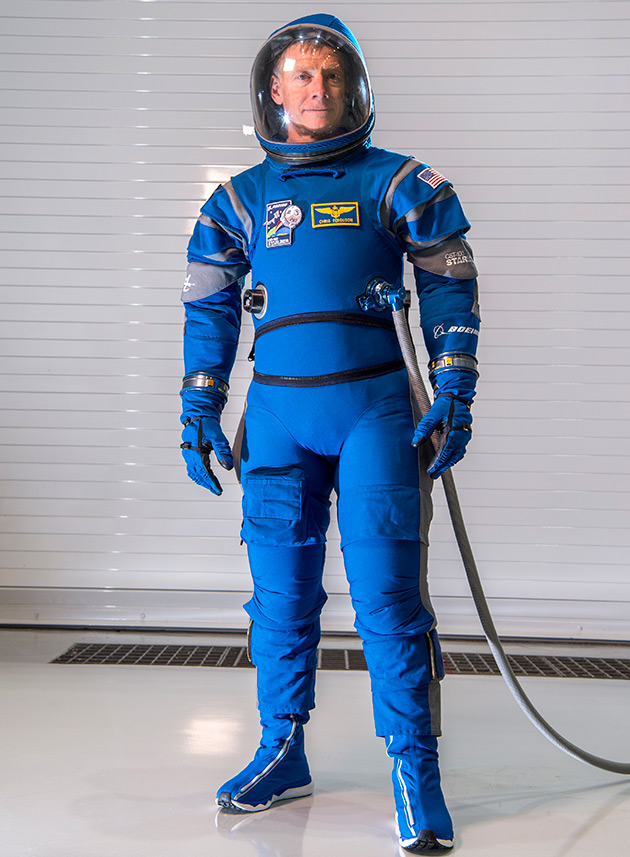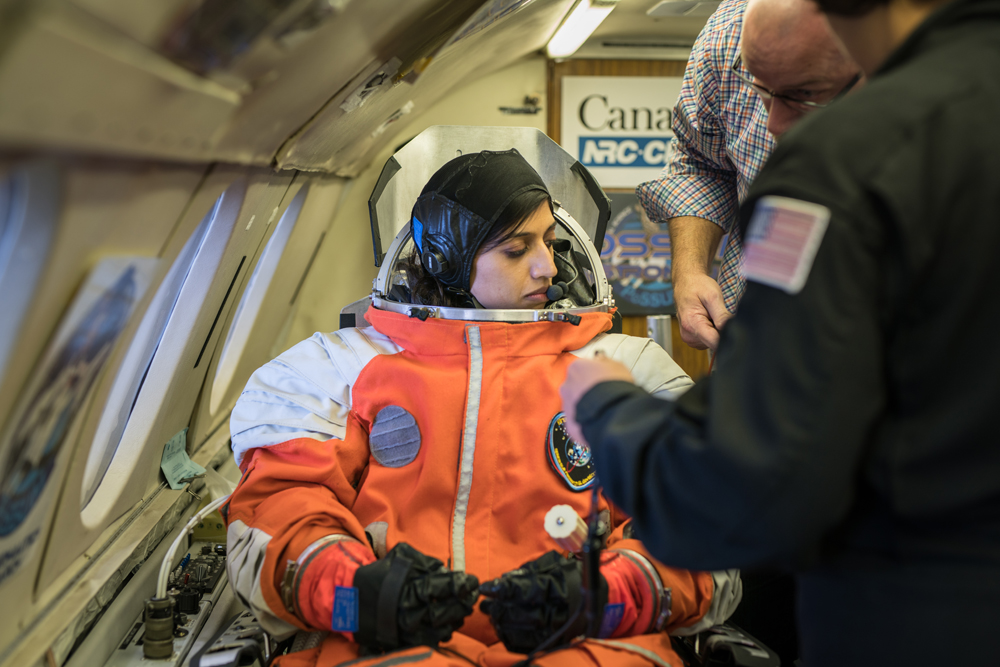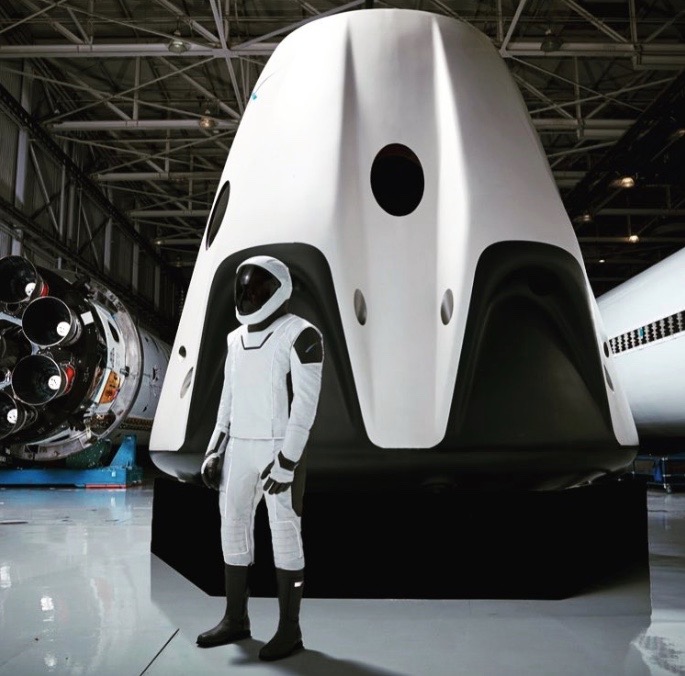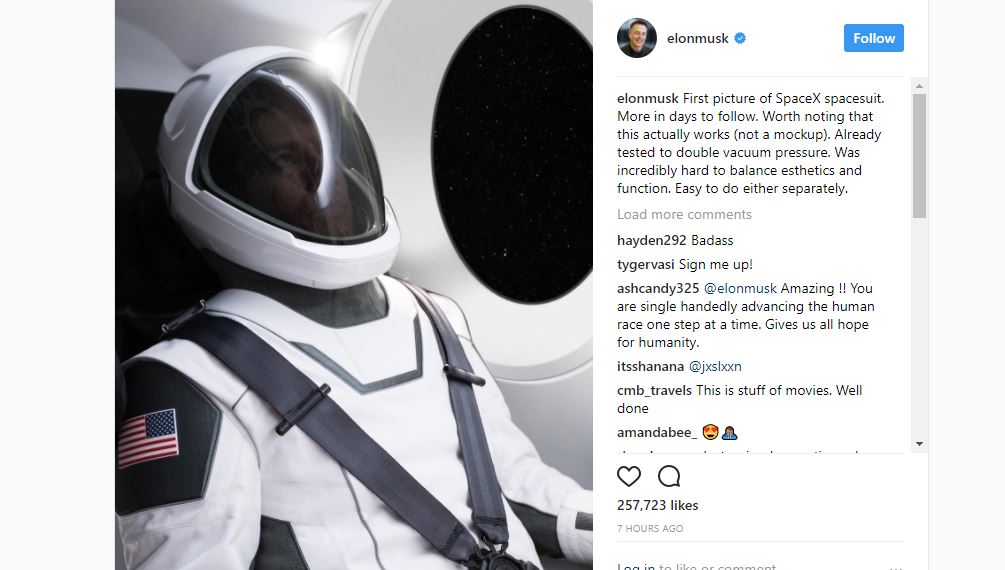Commercial Crew Astronauts Prepare for Launch — What Will They Wear?

SpaceX and Boeing are working to launch commercial crewed vehicles into space — so what will the astronauts wear?
As part of NASA's Commercial Crew Program, SpaceX and Boeing will fly crewed test flights in 2019, according to new schedule changes. These flights will follow uncrewed test flights that are scheduled for late 2018. Today (Aug. 3), NASA announced the astronauts who will make up the first commercial crew for these missions.
It will be exciting to follow the journey of these astronauts, from their training to their launch to the International Space Station. But what will they wear on their epic journey into orbit? Boeing has designed bold, blue spacesuits, whereas SpaceX has taken a more futuristic approach to space-travel fashion — although currently short on details. [Photos: Meet the 'Boeing Blue' Spacesuit for Starliner Capsule]
Keep in mind that Boeing and SpaceX's suits are designed for traveling in spacecraft to the space station; they are not created to be worn in the vacuum of space. For spacewalks, astronauts will continue to use the large, protective, recognizable white suits that are stored aboard the space station.

Boeing's blue suits
Of the new spacesuits designed for a commercial crew launch, Boeing's suits are certainly more reminiscent of NASA's classic "pumpkin suit," formally known as the Advanced Crew Escape Space Suit System (ACES). Boeing astronauts, who will fly aboard the company's CST-100 Starliner capsule, will don bright blue suits that are easily recognizable as spacesuits but are far slimmer and more form-fitting than NASA's orange duds.
Each suit, known as the "Boeing Blue" spacesuit, weighs about 20 lbs. (9 kilograms), including an integrated shoe, compared with the 30 lbs. (13.6 kg) of NASA's ACES suit.

Aside from their lighter, sleeker construction, Boeing's blue suits have a number of advanced features. The Boeing Blue suits have touch-screen-sensitive gloves, which will allow astronauts to interface with digital displays on board; the suit will be made of material that is more flexible than what was used in older spacesuits; and the suits' helmets will be soft, with both the helmet and visor incorporated into the suit — as compared to the older, detachable, hard helmets from NASA's older designs.
Get the Space.com Newsletter
Breaking space news, the latest updates on rocket launches, skywatching events and more!
Astronaut Suni Williams, who will fly with the Boeing team, spoke about the spacesuit in a Reddit AMA thread," saying that "advancement in material technologies allow us to do things like use touch screens. Both new suits also are designed to make it easier to see inside the spacecraft."
The suits will have vents to keep the astronauts cool and will allow the suit to pressurize immediately, a key safety feature, as the purpose of these spacesuits is to act "as the emergency backup to the spacecraft's redundant life-support systems. If everything goes perfectly on a mission, then you don't need a spacesuit. It's like having a fire extinguisher close by in the cockpit. You need it to be effective if it is needed," Richard Watson, a subsystem manager for spacesuits for NASA's Commercial Crew Program, said in a statement from NASA.
The blue suit design is also much simpler than the older NASA suits, a feature that Boeing and SpaceX's suits share. This is a huge improvement because "complicated systems have more ways they can break, so simple is better on something like this," NASA astronaut Eric Boe said in the statement.
Boe added, in the Reddit AMA, that "the spacesuits are much more comfortable than those from the shuttle days: lighter, simpler, require less cooling, and easier to work with. The technology from these suits came from those of the past."
Boeing Blue will also feature stylish footwear in the same vibrant color as the suit. The shoes, which will be integrated into the rest of the suit like the helmet and visor, are inspired by cross trainers and, at first glance, look like a cool pair of running shoes.

SpaceX's sleek design
SpaceX's spacesuit design is striking and unique. When Elon Musk first showed off the full design on Instagram, it received an enormous amount of attention for its ultra-modern appearance that looks straight out of a science-fiction flick.
The suit is mostly white with black details and it seems almost too slim and aesthetically sleek to be a fully functional spacesuit. But, as Musk assured reporters at a news conference in February, "It definitely works. You can just jump in a vacuum chamber with it, and it's fine."

Aside from comments like this from Musk, and from company images, SpaceX has not revealed many of the details or features of its suits. But there are certain aspects that the suit will most likely have for it to function as intended and keep the astronauts safe. NASA's ACES spacesuits, for example, feature an emergency breathing system, a liquid cooling system, an automatic inflatable parachute, even emergency food and water supplies. Alsony, in the event of depressurization, ACES suits are able to fully pressurize, a potentially life-saving feature of every spacesuit to date.
As mentioned, if SpaceX's Crew Dragon's onboard life-support systems perform without issue, then functionality of this suit is redundant. But a fully functional spacesuit is critical to ensuring the safety of astronauts. And so, while SpaceX has not publicized many details about its suit, it will likely have many of the same or similar features as ACES, if not more protective features.
One of the most fascinating aspects of SpaceX's spacesuit is that it was created by legendary Hollywood costume designer Jose Fernandez. Fernandez has most notably designed costumes for blockbusters like "Wonder Woman," "Wolverine," "Batman vs. Superman" and "Captain America: Civil War."
Email Chelsea Gohd at cgohd@space.com or follow her @chelsea_gohd. Follow us @Spacedotcom, Facebook and Google+. Original article on Space.com.
Join our Space Forums to keep talking space on the latest missions, night sky and more! And if you have a news tip, correction or comment, let us know at: community@space.com.

Chelsea “Foxanne” Gohd joined Space.com in 2018 and is now a Senior Writer, writing about everything from climate change to planetary science and human spaceflight in both articles and on-camera in videos. With a degree in Public Health and biological sciences, Chelsea has written and worked for institutions including the American Museum of Natural History, Scientific American, Discover Magazine Blog, Astronomy Magazine and Live Science. When not writing, editing or filming something space-y, Chelsea "Foxanne" Gohd is writing music and performing as Foxanne, even launching a song to space in 2021 with Inspiration4. You can follow her on Twitter @chelsea_gohd and @foxannemusic.









